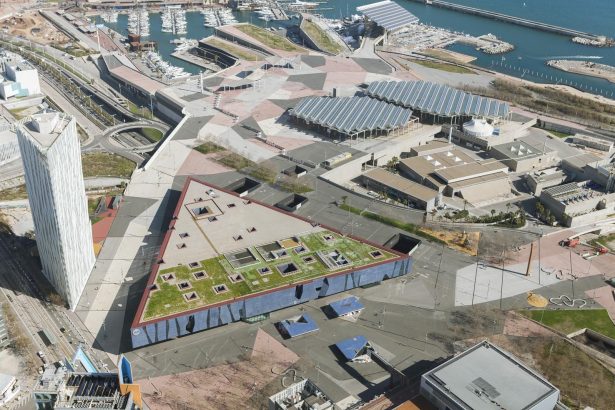CLOSED FOR WORKS. Sorry for the inconveninences.
Total surface area of the roof: 14,000 m2. Surface area of the Living Terrace: 7,100 m2.

Aerial view of the green roof of the Museum. Image of Pere Vivas/MCNB
What is the Museum’s Living Terrace like?
Specific building features and location are factors that determine the types of plants that can be grown on green roofs. As to the Museum’s Living Terrace, it has a weight limit, the sea is nearby, and it is often windy. So as not to exceed the maximum weight of the roof, herbaceous plants were chosen, as they only require a thin layer of soil. Trees and heavy plants were therefore avoided.
The Living Terrace houses vegetation that has adapted to the environmental conditions of the Mediterranean and specifically to those of Barcelona and the proximity to the sea.
